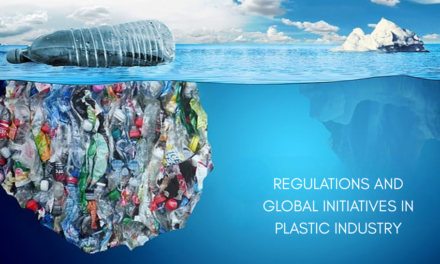The adoption of green and sustainable chemicals is driven by a combination of regulatory pressures, market demands, and advancements in technology. These drivers influence industries to transition from traditional chemicals to eco-friendly alternatives that prioritize environmental, social, and economic sustainability. Below are the key drivers fueling this shift:
1. Regulatory and Policy Initiatives
- Stringent Environmental Regulations:
- Governments worldwide are enforcing laws to limit the use of hazardous chemicals, reduce emissions, and promote sustainability.
- Examples:
- EU REACH (Registration, Evaluation, Authorization, and Restriction of Chemicals).
- U.S. Toxic Substances Control Act (TSCA) amendments.
- Bans and Restrictions:
- Prohibition of harmful substances like phthalates, formaldehyde, and certain microplastics.
- Example:
- EU’s single-use plastics directive includes restrictions on oxo-degradable plastics.
- Incentives for Green Innovation:
- Subsidies, tax breaks, and grants for companies investing in green chemistry.
2. Consumer Demand for Eco-Friendly Products
- Awareness of Environmental Impact:
- Growing consumer knowledge about climate change and pollution drives demand for sustainable products.
- Examples:
- Preference for biodegradable detergents and natural skincare products.
- Preference for Transparency:
- Consumers expect clear labeling and eco-certifications for environmentally friendly chemicals.
- Examples:
- Certifications like EPA Safer Choice, EU Ecolabel, and Cradle to Cradle Certified.
3. Corporate Sustainability Goals
- Commitment to Net-Zero Goals:
- Companies are aligning with global sustainability initiatives such as the Paris Agreement and UN Sustainable Development Goals (SDGs).
- Example:
- Adoption of renewable feedstocks to reduce carbon footprints.
- Brand Image and Reputation:
- Businesses use green chemicals to enhance their market positioning and appeal to eco-conscious consumers.
4. Market Trends and Competitive Advantage
- Clean Beauty and Green Products:
- The rise of clean beauty, vegan, and natural product trends is increasing the demand for green chemicals in personal care and cosmetics.
- Product Differentiation:
- Companies adopt green chemicals to distinguish themselves in competitive markets.
5. Technological Advancements
- Biotechnology and Bio-Based Feedstocks:
- Innovations in fermentation, enzymatic processes, and bio-refineries are making bio-based chemicals cost-competitive.
- Examples:
- Bio-ethanol, bio-polyethylene, and polylactic acid (PLA).
- Nanotechnology and Smart Materials:
- Advanced technologies improve the performance of green chemicals, enabling their use in high-demand applications.
6. Economic Benefits
- Cost Savings in the Long Term:
- While initial costs may be higher, green chemicals often reduce waste, energy use, and disposal costs, offering economic advantages over time.
- Circular Economy Integration:
- Green chemicals support closed-loop systems, minimizing raw material usage and enhancing resource efficiency.
7. Climate Change and Resource Scarcity
- Reducing Carbon Emissions:
- Green chemicals are integral to decarbonization strategies in manufacturing and supply chains.
- Limited Availability of Fossil Resources:
- The depletion of fossil fuels is encouraging the shift to renewable and sustainable feedstocks.
8. Industry-Specific Drivers
- Automotive Industry:
- Lightweight materials, bio-based lubricants, and low-VOC coatings to meet emission standards and sustainability goals.
- Construction Industry:
- Sustainable coatings, adhesives, and thermal insulation materials.
- Agrochemical Sector:
- Bio-based fertilizers and pesticides to reduce environmental impact.
9. Circular Economy and Waste Management
- Recycling and Upcycling:
- Green chemicals enable efficient recycling and valorization of waste materials.
- Examples:
- Upcycling food waste into bio-based surfactants.
- Zero-Waste Goals:
- Many industries aim for zero-waste production, driving the use of sustainable chemical processes.
10. Health and Safety Concerns
- Consumer Health:
- Demand for safer alternatives to toxic chemicals in household products, cosmetics, and cleaning agents.
- Worker Safety:
- Adoption of green chemicals reduces occupational exposure to harmful substances.
11. Supportive Ecosystem for Innovation
- Collaborations and Partnerships:
- Industry-academia collaborations accelerate the development and commercialization of green chemicals.
- Startups and Investment:
- Venture capital and private equity investments are fueling innovations in green chemical technologies.
12. Regulatory Compliance and Certifications
- Green Labeling Requirements:
- Products must meet eco-label standards to gain market approval in certain regions.
- Global Trade and Export Standards:
- Adopting green chemicals ensures compliance with international trade regulations.
Challenges and Opportunities
- Challenges:
- Higher production costs, technological barriers, and consumer skepticism about performance.
- Opportunities:
- Investments in R&D, scalable technologies, and consumer education can accelerate adoption.
Future Outlook
- The green chemicals market is expected to grow significantly, driven by technological advancements, regulatory support, and consumer preferences.
- Innovations such as AI-driven material design and bio-refineries will further enhance the cost-effectiveness and adoption of green chemicals.
Conclusion
The adoption of green and sustainable chemicals is being propelled by a combination of environmental, regulatory, and market forces. Companies across industries are increasingly embracing these chemicals to meet consumer demands, achieve sustainability goals, and gain a competitive edge in a rapidly evolving marketplace. As technologies advance and costs decline, the transition to green chemicals will continue to accelerate, contributing to a more sustainable future.
Hashtags
#GreenChemicals #SustainableChemicals #EcoFriendlyChemicals #SustainableSolutions #GreenChemistry #EnvironmentalImpact #EcoChemistry #ClimateSmartChemicals #LowCarbonChemicals #EnvironmentalStewardship #ConsumerDemand #GreenConsumerTrends #SustainableConsumerGoods #EcoDemandShift #SustainableMarketGrowth #Innovation #TechForSustainability #SustainableInnovation #BioBasedChemicals #CleanTechChemicals #RegulatoryInfluence #SustainableRegulations #GreenPolicySupport #ESGInChemicals

















